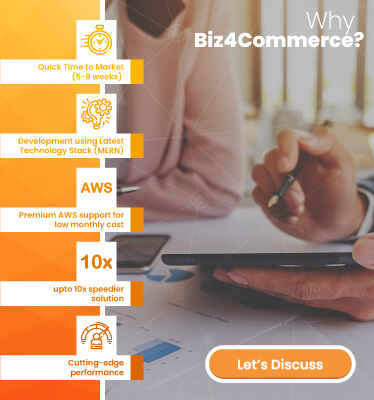MEAN Vs MERN: Choose the right Stack for Your Web Development Project
The dawn of the digital age has brought along one inevitable fact that cannot be ignored, and that is the having presence on the online platforms. Yes! If you want to increase your customer base and want to see a sizeable growth of your business, you must push the boundaries further, and the first step to do that is through a functional and impactful website or web application that can serve your business righteously. You need someone who can create a website, a mobile app, or an e-commerce platform for you. More precisely, that means the services of ‘Full Stack Development’. In this digital age, the two of our favorite full-stack technologies are MEAN and MERN that are reshaping the online world as we see it.
Full Stack for Website and Mobile App Development: The Need of the Hour
The modern age web development process is quite complicated and needs different strategies, and various tools to be worked upon during every phase of web development. Therefore, for the complete design and development of a website, it is needed that you onboard an entire team of expert full-stack developers. Statistically speaking, with 3.5 billion smartphones in hands and the global e-retail sales set to reach USD 4.8 trillion by 2021, having a quality website for selling your products and services has become the need of the hour. The days of static sites are also long gone because for every need, the first step of every Millennial and Gen Z person is online browsing and searching. If you want to grow your business and tap that vast pool of potential clientele, full-stack development is the solution what you need.
Full Stack Development: The Roots for Origin of MEAN and MERN
Technically, full-stack development refers to the development of the front end and the back end of web or app. This whole process is further categorized into three parts
• Presentation layer (front end with UI)
• Business Logic Layer (back end with data validation)
• The Overlying Database Layer
Or, in other words, the development of both client and server-side of a software application refers to full-stack development. Whether it is to program a browser (like using JavaScript, jQuery, Angular, or Vue), program a server (like using PHP, ASP, Python, or Node), or program a database (like using SQL, SQLite, or MongoDB); there are a number of languages/ tech stacks that helps developers in the web & app development viz. LAMP, MEAN, Django, Ruby on Rails, MERN, LEMP, etc. Out of these, we are going to have a detailed discussion on the two most popular stacks of 2020 – MEAN and MERN.
Both the methodologies, MEAN and MERN, majorly talk about the JavaScript-based technologies. The dedicated team of MEAN/MERN Stack developers makes the best use of the stack toolkits for various web-based applications needed for your business ranging from a complete eCommerce platform to a single page web app. While full-stack adheres to the development of web applications from front to end, including front end, back end, and database, MEAN/MERN Stack, on the other hand, is a set of technologies used to make a full-stack application.
JavaScript has become an interface to the web and has evolved over the decades since its inception. Today, with the tech advancements that we are witnessing, the role of JavaScript has gone beyond just adding visual effects to websites and take an active part in implementing application logic and database access.
What is MEAN?
MongoDB, Express.JS, Angular, and Node.JS are a group of technologies that are combinedly termed as MEAN Stack technology in Mobile and Web Applications. Let’s have a look at the details that comprise the acronym MEAN:
1. MongoDB: Document database — This document database is used for back-end application to store the data as JavaScript Object Notation (JSON) documents.
2. Express.JS: This open-source web application framework for Node.js helps quick and easy creation of APIs with a myriad of HTTP utility methods.
3. Angular.JS: This front-end web app framework runs your JavaScript code in the user’s browser and allows the application UI to be dynamic.
4. Node.JS: This JavaScript runtime environment allows developers to implement the application back-end in JavaScript.
What is MERN?
Just as MEAN, MERN also consists of different four open-source components: MongoDB, Express, React, and Node.js. They provide the end-to-end framework support for developers. Let’s see them in detail:
1. MongoDB: As we have foretold, this is a document-based open-source database with a Cloud-hosted facility.
2. Express.JS: This Fast, unopinionated, minimalist web framework for Node.js is adept in creating APIs quickly and easily.
3. React.JS: This set of pre-written JavaScript helps in building a dynamic library with high performance. Indeed, it is a JavaScript front-end library for building user interfaces.
4. Node.js: This is a JavaScript runtime built on Chrome’s V8 JavaScript engine. It makes use of an event-driven, non-blocking I/O model and comes with the unique element of Node Package Manager (NPM).
Difference Between MEAN and MERN
Before delving any deeper into the differentiation, let’s point out the foremost obvious thing: the difference between Angular.JS and React.JS that separates MEAN and MERN.
Angular.JS has been quite popular amongst developers for its MVC architecture, whereas, React.JS with its adequate library, helps developers with abstraction on the UI layer to optimize the component rendering code for building the application. While Angular.JS is backed by Google.Inc, React.JS is backed by Facebook.Inc. Both the framework and the library have their implications based on the requirement of the application.
While both MEAN and MERN provide abstraction at the User Interface (UI) level, there are specific points that differentiate both from each-other.
Performance:
The modern version of Angular.JS is quite stable and adroitly accomplishes the development of JavaScript-based MVC framework. Both coding and managing files during the front-end development get easier with this. In contrast to this, React.JS speeds up the coding process being a JavaScript Library. We can conclusively say that React.JS performs far better than Angular.JS in terms of performance.
Therefore, though MERN has recently entered the development domain, it is highly likely to exhibit better performance, along with the agility that the application needs. With time, JavaScript has become an interface to the web and the high-performance capability of the Library that MERN offers, developers can deliver websites with a rich experience similar to mobile apps.
Architecture:
LinkedIn, the biggest professional social media platform chose MEAN over MERN for building the enterprise-level application. The reason for this selection was quite simple – Architecture. Although this can be disputed that MERN makes UI rendering simple, React.JS is just a library, whereas, Angular.JS can help render a well-organized framework that can support MVC or MVW architecture.
If saying from a developer’s perspective, MERN enables separation of the database and UI code through an intermediate layer, and therefore, it becomes easier to manage and upgrade the codes. Here, clearly, the battle is won by MERN in terms of architecture, but it would be wise to say that both MEAN and MERN can find their appropriate usage depending on the required solution.
Third-Party Libraries:
We have already made a clear separation that Angular.JS is a framework, whereas, React.JS is a library. Now, when considering the development of a large-scale enterprise application (assuming the development of a large-scale e-commerce solution like amazon.com), multiple third-party libraries need to be included. As Angular.JS support “$http” calls in order to connect front-end, back-end, and the libraries, MEAN acts better as a plug-and-play stack for developers.
Yet again, this is noteworthy to mention that React.JS is just a library, and therefore, to perform for additional features and construction of a large-scale enterprise solution, it will require additional libraries and configuration. Here as well, the point goes to MEAN in terms of utilizing third-party libraries over MERN.
Organized Flow of Development
With MVC (Model View Controller) architecture, MEAN doesn’t just make the overall application building process easier and robust but also because of the inclusion of Angular.JS framework keeps the web application development process much organized, as libraries can be easily integrated. MERN, on the other hand, because a flexible framework requires the inclusion of more libraries other than React.JS and frameworks to build the application. Therefore, we can state that MEAN helps in resisting unnecessary grunt work that can be needed by MERN to develop the same application.
Conclusion
Some famous companies using Angular are NASA, HBO, Nike, and YouTube. The famous companies using React are Uber, Dropbox, Instagram, PayPal, Netflix, and Flipkart. It is believed that MEAN stack is an ideal choice for large scale applications, and MERN stack is ideal when you want faster development in small applications. Ultimately, the choice comes down to the web design company which you hire for your project because they can better understand the actual requirements.
The developers’ team of Biz4Commerce comes with full-stack experience, and therefore, we take on the challenges upfront and deliver the best-in-class work within the stipulated time durations. We take into consideration all the factors like architecture, ease of maintenance, the efficiency of the application, organized flow, stack performance, agility, etc. before we recommend our solution for your project.
Our team comprises of geniuses who have adroit expertise on Front-end technology, Development Languages, Database, Basic design ability, Server, Working with API and version control systems. Whether it is MEAN stack, MERN stack, React JS, Angular.JS, Node JS, or any other framework or library, the End-to-End solutions that we deliver are far more advanced and perfect even when viewed with a 360-degree approach.








